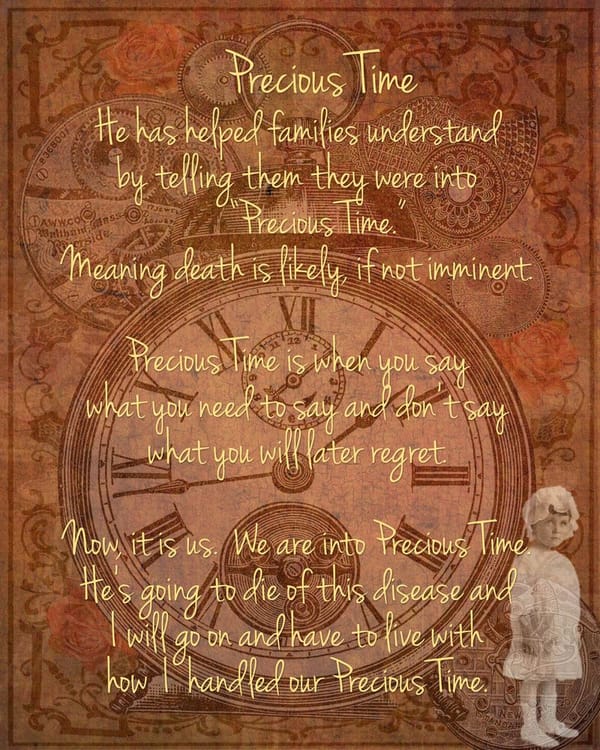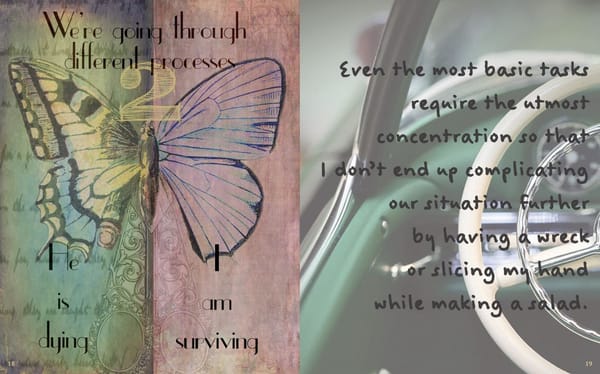The Healing Power of Yoga in Hospice and Palliative Care: A Path to Peace and Comfort for Patients and Families

Yoga is widely recognized for its numerous benefits, from improving flexibility and strength to reducing stress and anxiety. However, its impact extends far beyond just physical fitness. In the context of hospice and palliative care, yoga offers profound emotional, psychological, and spiritual support for both patients and their families, providing a unique avenue for comfort, relaxation, and peace during some of life’s most challenging moments.
What is Yoga?
At its core, yoga is an ancient practice that involves physical postures (asanas), breathwork (pranayama), meditation, and mindfulness techniques. Originating in India thousands of years ago, yoga is designed to create balance between the body, mind, and spirit. It promotes deep relaxation, reduces stress, improves mental clarity, and cultivates a greater sense of well-being. While many associate yoga with flexibility and strength-building, its deeper benefits lie in its ability to harmonize the body’s internal systems, promote emotional balance, and nurture a peaceful state of mind.
The Role of Yoga in Hospice and Palliative Care
Hospice and palliative care are focused on improving the quality of life for patients with serious, life-limiting illnesses. These patients often experience not only physical pain and discomfort but also emotional distress, anxiety, and existential suffering. Traditional medical treatments may not always be able to address these complex needs. In such contexts, complementary therapies like yoga can provide significant relief and improve overall well-being.
Here’s how yoga can benefit both hospice and palliative care patients and their families:
1. Pain Management and Physical Relief
Yoga has long been used as a tool for pain management, helping to alleviate the discomfort associated with chronic illnesses. Through gentle movement and focused breathing, yoga promotes relaxation and reduces muscle tension, which can lessen the perception of pain. It can also improve circulation, ease joint stiffness, and alleviate the physical stress associated with certain treatments or prolonged periods of immobility.
While patients in hospice and palliative care may be facing terminal conditions, yoga can help reduce the intensity of pain and improve their comfort. By guiding patients through gentle stretches and mindful breathing, yoga encourages relaxation, providing a welcome respite from the physical burdens of illness.
2. Reducing Stress and Anxiety
Stress, anxiety, and fear are common experiences for patients in hospice and palliative care, as well as their families. The uncertainty and emotional weight of facing a terminal diagnosis can be overwhelming. Yoga, with its focus on deep breathing and relaxation techniques, is a powerful antidote to stress and anxiety.
The act of slow, controlled breathing (such as the practice of pranayama) signals the body’s parasympathetic nervous system, promoting a state of calm. Regular yoga practice can help patients and their families manage the emotional distress associated with fear of the unknown, end-of-life concerns, and anticipatory grief. Yoga helps create space for emotional expression and healing, offering a path toward mental clarity and emotional resilience.
3. Improved Sleep Quality
Sleep disturbances, including insomnia, are common in patients receiving hospice and palliative care. Whether due to physical discomfort, anxiety, or medication side effects, sleep can often become elusive during this phase of life. Yoga, particularly when practiced before bedtime, can significantly improve the quality of sleep.
Yoga techniques like gentle asanas, restorative poses, and deep breathing activate the body’s relaxation response, which can help induce restful sleep. Moreover, yoga promotes the release of endorphins and other feel-good hormones, contributing to a sense of calm and well-being that fosters a better night’s sleep.
4. Enhancing Emotional Well-Being and Spiritual Health
Yoga offers patients and their families a space for introspection, allowing them to process emotions and connect with their inner selves. For patients nearing the end of life, this can be a profound opportunity for reflection and emotional healing. Yoga encourages mindfulness, which cultivates an increased awareness of the present moment. This mindfulness helps individuals let go of past regrets and future anxieties, fostering a sense of acceptance and peace.
Spiritual well-being is another critical area in hospice and palliative care. Many patients experience existential questions about life, death, and the meaning of their experiences. Yoga, as a holistic practice, encourages self-awareness and a deeper connection with the spiritual aspect of life, whatever that may mean for the individual. It can provide a means of finding inner peace, easing the emotional weight of facing mortality, and experiencing comfort during the transition.
5. Promoting a Sense of Agency and Control
One of the most disempowering aspects of a terminal diagnosis is the feeling of losing control. Yoga offers patients the opportunity to reconnect with their bodies, engage in self-care, and experience moments of agency in the midst of their illness. Through simple movements and focused breathwork, patients can take part in the practice at their own pace, cultivating a sense of empowerment. This helps preserve dignity and provides a reminder that they are active participants in their own care.
6. Supporting Caregivers and Family Members
The benefits of yoga extend beyond the patients themselves. Caregivers and family members often experience high levels of stress, emotional strain, and physical exhaustion as they navigate the complexities of caring for a loved one in hospice or palliative care. Yoga offers a restorative practice for caregivers, helping them manage stress, build resilience, and maintain their own physical and emotional health.
By engaging in yoga together, patients and families can also strengthen their bond, share peaceful moments, and support one another. The calming effects of yoga can ease the tension and fatigue often felt by family members, allowing them to be more present and compassionate in their care.
How Yoga Can Be Practiced in Hospice and Palliative Care Settings
Yoga does not need to be an intense or physically demanding practice to be beneficial. In fact, for hospice and palliative care patients, gentle, restorative forms of yoga are ideal. Here are a few ways yoga can be adapted to suit the needs of these patients:
Chair Yoga: For patients who are unable to get on the floor or have limited mobility, chair yoga can offer a safe and accessible way to practice yoga. Chair yoga allows patients to perform gentle stretches, movements, and breathing exercises while seated, reducing strain on the body.
Restorative Yoga: This style of yoga focuses on deep relaxation and mindfulness through the use of props like blankets, pillows, and bolsters to support the body in restful poses. It is ideal for patients with limited energy or who require additional support for their physical practice.
Breathing Techniques: Simple breathing exercises (pranayama) can be practiced by patients at any stage of their illness. These techniques can help calm the nervous system, reduce anxiety, and bring the body into a state of relaxation.
Mindfulness Meditation: Meditation practices, especially mindfulness meditation, can be integrated into a yoga routine to help patients focus on the present moment and cultivate emotional calm.
Partner Yoga: In some cases, family members or caregivers can participate in yoga alongside the patient. Gentle partner stretches can foster emotional connection and support.
Conclusion
Yoga is an invaluable tool in the care of hospice and palliative patients, providing numerous physical, emotional, and spiritual benefits. Through its gentle and holistic practices, yoga helps alleviate pain, reduce stress and anxiety, improve sleep, and promote overall well-being for both patients and their families. In a time of life when comfort, peace, and dignity are paramount, yoga provides a compassionate and nurturing path toward healing. Whether practiced by patients or their caregivers, yoga offers a powerful way to create moments of calm and connection during a challenging and deeply personal journey.
For healthcare providers, incorporating yoga into palliative care plans can enrich the overall experience for both patients and their families, offering a holistic approach to comfort, care, and healing.
A Personal Acknowledgment and Thank You:
As I reflect on the healing power of yoga within palliative and hospice care, I want to extend my deepest gratitude to those who have profoundly influenced my own practice and understanding of this work. A special thank you to Ashley Ghattas and Chris Ortega for their unwavering support, insight, and knowledge—your commitment to community wellness and mindful living is truly inspiring.
I am also immensely grateful to all the other talented and compassionate instructors at Unwind Yoga in Albuquerque, New Mexico. Your teachings have not only nurtured my personal journey on the mat but have also illuminated the ways in which yoga can bring peace, presence, and dignity to those navigating serious illness. Your work is deeply felt and genuinely appreciated. Thank you for all that you do. -Shayne
References:
- Deshpande A. Yoga for palliative care. Integr Med Res. 2018 Sep;7(3):211-213. doi: 10.1016/j.imr.2018.04.001. Epub 2018 Apr 30. PMID: 30271708; PMCID: PMC6160500.
- Daniel John M, Taylor EJ. Beyond Turmeric and Yoga: Advance Care Planning and End-of-Life Considerations Among Asian Indian American Hindus. J Hosp Palliat Nurs. 2022 Oct 1;24(5):258-264. doi: 10.1097/NJH.0000000000000880. Epub 2022 May 12. PMID: 35560304.
- Jennings T. Being mortal. Frontline. https://www.pbs.org/wgbh/frontline/film/being-mortal/ . Published 2015. April 10, 2025.
- Giridharan S, Shanbhag NM. Enhancing End-of-Life Care Through Yoga. Cureus. 2024 Feb 18;16(2):e54405. doi: 10.7759/cureus.54405. PMID: 38380109; PMCID: PMC10877067.





